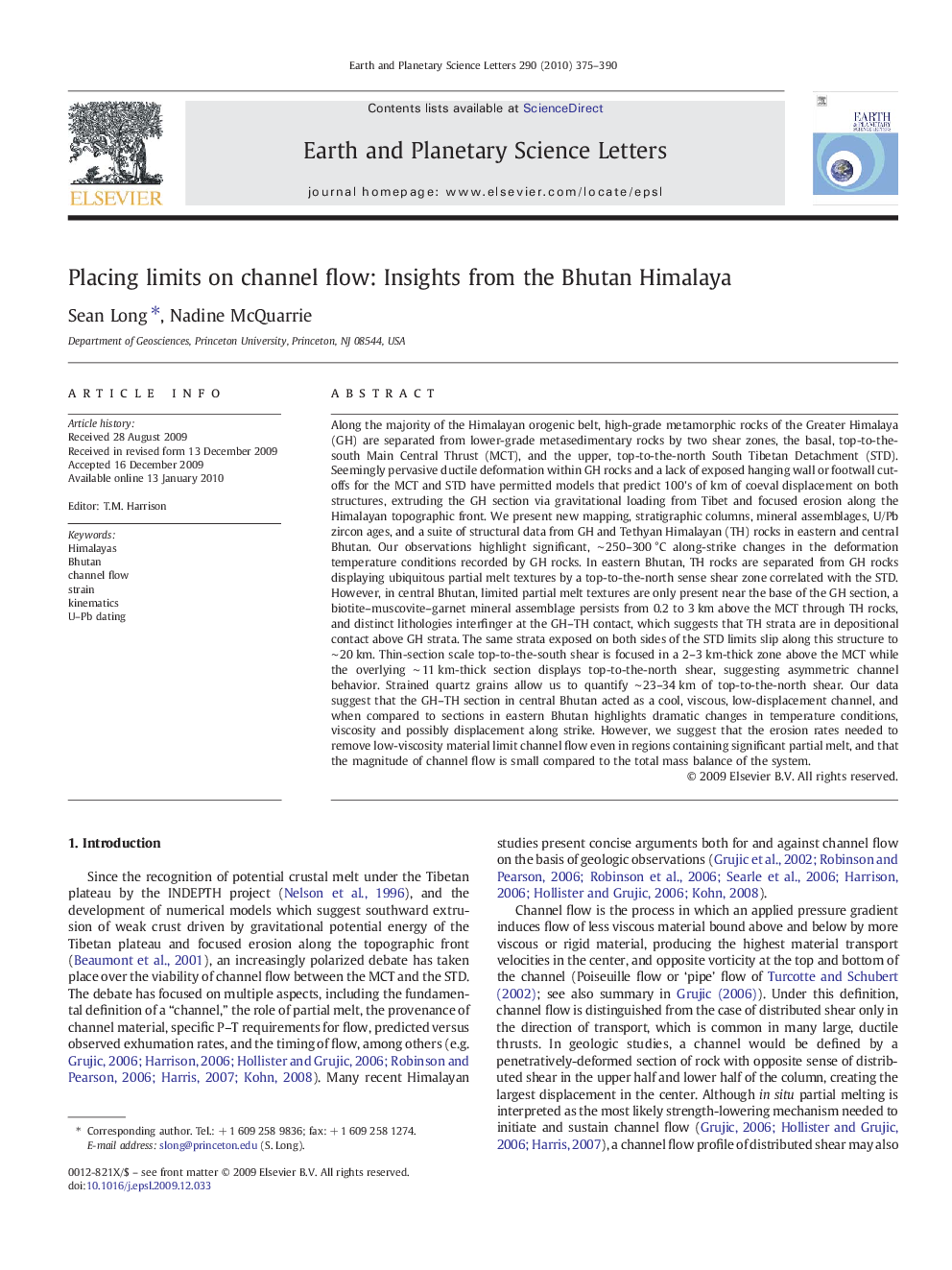| کد مقاله | کد نشریه | سال انتشار | مقاله انگلیسی | نسخه تمام متن |
|---|---|---|---|---|
| 4678514 | 1634858 | 2010 | 16 صفحه PDF | دانلود رایگان |

Along the majority of the Himalayan orogenic belt, high-grade metamorphic rocks of the Greater Himalaya (GH) are separated from lower-grade metasedimentary rocks by two shear zones, the basal, top-to-the-south Main Central Thrust (MCT), and the upper, top-to-the-north South Tibetan Detachment (STD). Seemingly pervasive ductile deformation within GH rocks and a lack of exposed hanging wall or footwall cut-offs for the MCT and STD have permitted models that predict 100's of km of coeval displacement on both structures, extruding the GH section via gravitational loading from Tibet and focused erosion along the Himalayan topographic front. We present new mapping, stratigraphic columns, mineral assemblages, U/Pb zircon ages, and a suite of structural data from GH and Tethyan Himalayan (TH) rocks in eastern and central Bhutan. Our observations highlight significant, ∼ 250–300 °C along-strike changes in the deformation temperature conditions recorded by GH rocks. In eastern Bhutan, TH rocks are separated from GH rocks displaying ubiquitous partial melt textures by a top-to-the-north sense shear zone correlated with the STD. However, in central Bhutan, limited partial melt textures are only present near the base of the GH section, a biotite–muscovite–garnet mineral assemblage persists from 0.2 to 3 km above the MCT through TH rocks, and distinct lithologies interfinger at the GH–TH contact, which suggests that TH strata are in depositional contact above GH strata. The same strata exposed on both sides of the STD limits slip along this structure to ∼ 20 km. Thin-section scale top-to-the-south shear is focused in a 2–3 km-thick zone above the MCT while the overlying ∼ 11 km-thick section displays top-to-the-north shear, suggesting asymmetric channel behavior. Strained quartz grains allow us to quantify ∼ 23–34 km of top-to-the-north shear. Our data suggest that the GH–TH section in central Bhutan acted as a cool, viscous, low-displacement channel, and when compared to sections in eastern Bhutan highlights dramatic changes in temperature conditions, viscosity and possibly displacement along strike. However, we suggest that the erosion rates needed to remove low-viscosity material limit channel flow even in regions containing significant partial melt, and that the magnitude of channel flow is small compared to the total mass balance of the system.
Journal: Earth and Planetary Science Letters - Volume 290, Issues 3–4, 20 February 2010, Pages 375–390